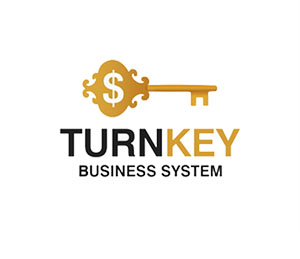Artificial Intelligence and the “Invisible Price of Efficiency”: Lessons from Salesforce

Artificial Intelligence and the “Invisible Price of Efficiency”: Lessons from Salesforce
Marc Benioff’s recent announcement to cut 4,000 customer service employees wasn’t just news, it was a symbol of a turning point.
In an interview with The Logan Bartlett Show podcast , he said bluntly, “I’ve cut my staff from 9,000 to about 5,000 because I need fewer people.” And the reason for this isn’t a crisis or business failures, but the implementation of its own AI solutions.
In an interview with The Logan Bartlett Show podcast , he said bluntly, “I’ve cut my staff from 9,000 to about 5,000 because I need fewer people.” And the reason for this isn’t a crisis or business failures, but the implementation of its own AI solutions.
Salesforce has always had a knack for surprising.
The company, which started out as a cloud service for managing customer relationships, is now at the center of a new wave of automation — and, in fact, has shown how artificial intelligence can change the corporate landscape not just in words, but in practice.
The Salesforce story illustrates what analysts have been talking about for the past two years: artificial intelligence has ceased to be an experiment in a laboratory and has become a direct factor in the transformation of the labor market. If earlier layoffs were associated with a drop in demand or cost optimization, now layoffs are explained by the fact that some tasks have been permanently transferred to machines.
The company, which started out as a cloud service for managing customer relationships, is now at the center of a new wave of automation — and, in fact, has shown how artificial intelligence can change the corporate landscape not just in words, but in practice.
The Salesforce story illustrates what analysts have been talking about for the past two years: artificial intelligence has ceased to be an experiment in a laboratory and has become a direct factor in the transformation of the labor market. If earlier layoffs were associated with a drop in demand or cost optimization, now layoffs are explained by the fact that some tasks have been permanently transferred to machines.

Artificial Intelligence and the “Invisible Price of Efficiency”: Lessons from Salesforce
Agentforce: The Bot That Replaced the Engineer
The spotlight was on Agentforce , Salesforce's flagship AI solution. It's not just a chatbot or assistant, but an entire ecosystem of virtual agents trained to solve support service problems. They automatically analyze requests, find solutions in the knowledge base, build a dialogue with clients, and in some cases close requests without human intervention.The company claims that after the large-scale implementation of Agentforce, the number of requests has decreased so much that the need to fill many vacancies for support engineers simply disappeared. For managers, this is a dream: lower costs, faster processing of requests, satisfied customers. But for thousands of specialists, it is a cold shower, because the usual workplaces literally disappeared.
A tectonic shift in the labor market
Salesforce isn’t alone. A wave of AI-related layoffs has already swept across the U.S., affecting industries from finance and insurance to media, according to human resources consultant Lori Ruettimann . In jobs that rely on processing information, machine learning is faster and cheaper."If your network could help you find a job, it would have done it already. It would have done it yesterday," says Rüttimann, urging workers to urgently reorient themselves and learn new skills. Her words are clear-eyed realism: resisting automation is pointless, the only option is to adapt.
The illusion of "growth at any cost"
However, not all experts see Salesforce’s actions solely as a victory for technology. Analyst Ed Zitron points to another factor: many IT companies “inflated their staff” to inappropriate sizes during the pandemic, and are now using AI as a convenient explanation for mass layoffs."It's just a desire for growth at any cost," Zitron says. "The only thing that matters is growth, even if it ruins people's lives. Even if it hurts the company and results in a bad product."
In other words, AI is becoming not only a real reason for layoffs, but also a PR argument to show investors: look, we are more efficient than our competitors . This creates a paradox: companies, striving for growth, can risk the quality of service, which is their main value.
The price of efficiency
At first glance, the Salesforce story is a triumph of rationalization. But if you look deeper, it becomes clear: automation is not just a technological upgrade, but a social experiment on a global scale. Four thousand employees are not statistics, but specific destinies. And when the CEO easily says: “I need fewer employees,” he actually admits that the company no longer sees people as the main resource.This does not mean that robots will completely replace people. But in the coming years, we will see a clear division: between those who manage AI and integrate it into business processes, and those who are bypassed by this process. The former will be on top, the latter - under the threat of constant instability.
What happens next?
Scaling up automation. If Salesforce has proven that it can replace thousands of specialists without losing the customer experience, then other companies will follow suit. Within two years, similar solutions will appear at banks, insurance companies, and service platforms.Growing demand for hybrid roles. Companies will look for employees who can not only work with clients, but also manage AI tools, configure them, and interpret data.
Changing corporate culture. Companies will start building internal academies to retrain staff. But these will be more targeted programs than mass training.
Social tensions. The cuts attributed to AI will intensify public debate about how to regulate this process. We may see new proposals for taxes on the use of AI or programs to support workers who lose their jobs.
Salesforce is a litmus test for the future.
Today, the company boasts that its AI does up to 50% of the work. Tomorrow, such claims will be heard more often. But here is the main question: who will be the customer if millions of people are unemployed and lose their income?
This story shows that artificial intelligence does not “take jobs” on its own — people make decisions. And as long as businesses see AI as a way to cut costs and accelerate growth, the human factor will be pushed into the background.
The only question is whether we will find a balance between efficiency and social responsibility. Because the numbers in the reports are good for shareholders, but society as a whole does not live by reports, but by jobs and stability.
By Claire Whitmore
September 04, 2025
Join us. Our Telegram: @forexturnkey
All to the point, no ads. A channel that doesn't tire you out, but pumps you up.









Report
My comments